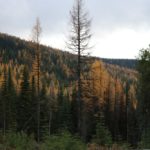Federal Land Management 2.017
Posted: May 4, 2017Source: The Forest Blog
By: Russ Vaagen

With so many acres facing the imminent risk catastrophic fire, we need to develop a nationwide strategy for effective forest treatment. Many collaborative groups have laid the groundwork for what is appropriate in their local areas. By identifying which lands are eligible for active management and conservation focus we can assign the appropriate treatment for each area.
Many areas of the country still have sawmill and wood byproduct infrastructure. These companies can utilize and pay for the material that will be generated from projects. These are the areas that need the first round of investment because they can generate returns.
Those returns need to have a clear distribution plan that includes money for counties, for recreation, for future planning efforts, for other National Forests, for supply development, for future infrastructure development, and so on. This simply needs fund allocations based on percentages, because regardless of return, percentages work. Doing this will ensure things continue to move in the best direction possible. The current budget system is fragmented and complicated.
A system that has worked in places like Canada are forest licenses. This is where forest resources are allocated to companies in a specific area. The companies are responsible for managing the forest based on guidelines and laws set by the government. That government agency is responsible for oversight. The companies generate management plans that include all the research and planning required by the government. Once submitted, the responsible agency reviews the plan with the company. The plan is either approved or returned with requested adjustments. Once a plan is approved the work can begin.
The work is still reviewed by the responsible agency to ensure compliance. This system works well and it should be put into use in the United States, especially in areas where infrastructure needs to be reestablished. Pricing should be set quarterly by a market-based formula that adjusts based on data. These licenses or long-term contracts need to be at least 20 years in duration. Other countries have licenses that can be up to 99 years.
Stewardship projects and timber sales are still necessary. These important methods of management need to stay in place to ensure marketplace competitiveness. Where mills exist there should still be market-based methods of sale ongoing.
The areas that need treatment, but aren’t part of the near-term plan for sales or stewardship projects should be considered for forest licenses or long term contracts. This is a must if we are to reach the pace and scale necessary to improve and restore our forests.
We need to form new regional boundaries that are of similar forest and management type. There isn’t any good reason that the forests of the Olympic Peninsula in Washington State should be managed in the same region as the fire-prone forests of eastern Oregon.
It also appears that Regional Offices are redundant and a waste of money. Once the regions are reestablished based on forest and management type, the regional offices should be closed. A regional board of made up of the Forest Supervisors should be created and have quarterly meetings, much like an association.
This would be an ideal time for discussing necessary changes as well as successes that could be implemented throughout the region. This would also be the time for direct communication with the Washington DC office. Just like an association, the leadership of the group should alternate as any association board. This will offer functional leadership across the region as well as a connection back to our Nation’s capital.
Do the current regional offices do anything that could not be done by a regional board of forest supervisors? This would stop the incessant requests to get “approved by the regional office,” or the “waiting for interpretation from the region.” It has become another layer that may not be necessary. If there’s a great reason to keep regional offices, I think everyone would be eager to hear what it is.
These are some of the ideas that need to be worked through as we pursue better forest management. We need to create products from the sound treatment of our forests where it makes sense. We also need to be open to having areas that are focused on other values including wilderness and backcountry. As we move through this topic we will dig into each land allocation and how we need address the uniqueness of each land base.
